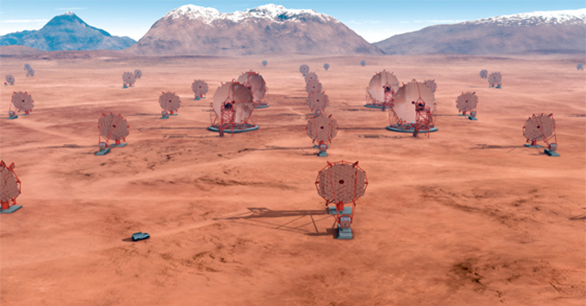projects
CTA

Overview
The Cherenkov Telescope Array (CTA) will use dozens of imaging atmospheric Cherenkov telescopes to detect gamma rays between 30 GeV and 100 TeV in energy. A prototype telescope is under construction, the first Schwarzschild-Couder telescope ever built, on Mount Hopkins in Arizona. The main goals of CTA are to understand the nature of dark matter and of extreme objects in the Universe, including huge black holes at the center of distant galaxies and the remnants of exploded stars, which are possible sources of cosmic rays.
Research Topics
- Gamma-ray astronomy
- Dark matter searches
- Multiwavelength astronomy
Senior Personnel
WIPAC Contributions
The WIPAC CTA team is currently working on a camera prototype for CTA, designed to detect TeV gamma rays and to precisely measure their energy and direction. The team is also developing a technique to measure an excess of high-energy antimatter particles, a predicted signature of dark mater decay.
Select Publications
Silicon Photomultiplier Camera for Schwarzschild-Couder Cherenkov Telescopes
J. Vandenbroucke for the CTA Consortium
(Conference Proceeding) Technology in Particle Physics 2014 proceedings (2014)
arxiv.org
The next generation Cherenkov Telescope Array observatory: CTA
S. Vercellone for the CTA Consortium
(Journal Article) Nuclear Instruments and Methods in Physics Research Section A, in press (2014)
arxiv.org | sciencedirect.com
Design Concepts for the Cherenkov Telescope Array
CTA Consortium
(Other) arXiv:1008.3703 [astro-ph.IM] 2010
arxiv.org
